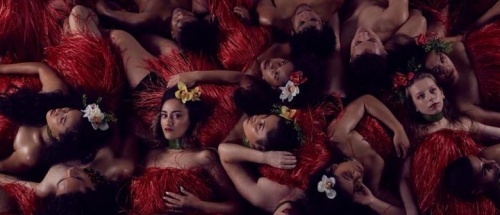KO AUĒ TEIA
Te Oro, 98 Line Road, Glen Innes, Auckland
30/08/2018 - 01/09/2018
Production Details
Due to popular demand, we are bringing back this sell-out dance show.
We are a village of different minds and bodies. We hail from different parts of the Pacific Ocean. We have paved a new way for our Pasifika people. We are a fresh perspective in the Contemporary Pacific dance world. We are AUĒ!
Join us for a night of celebration with AUĒ DANCE CO.
Choreography by Vivian Aue.
Four shows only
| Thu 30 Aug 2018, 7:00pm–8:00pm Opening Night |
| Fri 31 Aug 2018, 7:00pm–8:00pm |
| Sat 1 Sep 2018, 2:00pm–3:00pm Matinee |
| Sat 1 Sep 2018, 7:00pm–8:00pm Closing Night |
Pasifika contemporary dance , Dance , Contemporary dance ,
1 hour
Dark and thought-provoking
Review by Sariah Clayton 07th Sep 2018
The AUĒ Dance Company returned to Te Oro with reworked dances from their debut season KO AUĒ TEIA, once again performing with the raw and intense energy that leaves audiences feeling uncomfortable yet with brief surges of elevation. Performed by six women and five men, KO AUĒ TEIA is modelled on the life of a village and considers a series of social issues presented through dance choreographed by artistic director Vivian Hosking Aue.
The work contains layers of symbolism and effective imagery framed against Te Oro’s blacked out theatre, andswallows its audience in a way that captivates and abuses their senses. The score for the show is loud and abrasive yet it is vital to the piece and critical to the overall experience. The music accompaniment, created by Aue, is layered with live voice and song and draws on a wide range of Pasifika and world languages infused with electronic and percussive beats. Each live voice has personal connections to one of the dancers and is brought to life through the choreography. The music accompaniment and lighting synchronize harmoniously with the choreography and heighten the emotional experience of the audience. Aue certainly captures emotion through colour.
The dynamic of power within the village between male and female figures is given particular attention and is explored in several ways within the work.
Traditionally, men are believed to hold more power in the village, but we see a man being stripped of his ie (lava lava or sarong) by several women who also viciously rip apart lemons to spit their juices onto him. While this is happening, another woman rubs the juices into his body. This scene suggests that women also have considerable power if they choose to use it, that male and female can be seen to have equal power and their own roles to play within the village.
The performers commit to every part of the show, uttering indistinct sounds and shrilling screams. Their performance at times is violent and hard to watch, yet leaves you on the edge of your seat wanting more. The content of the show is explicit and often dark, violent, heavy, but it is also thought-provoking, offering a challenge to the audience to consider and decipher each layer of the performance and make sense of it in their own lives.
Copyright © in the review belongs to the reviewer





Comments